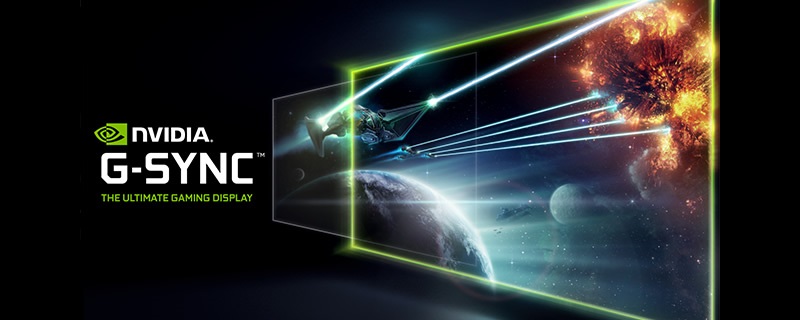Nvidia explain the benefits of their G-Sync HDR technology
Nvidia explain the benefits of their G-Sync HDR technology
Â
If there is one phrase that can summarise a large portion of CES 2017 it would be HDR, be with Nvidia’s G-Sync HDR, AMD’s FreeSync 2 or any of the seemingly countless display manufacturers that are now adopting high dynamic range support. Â
Today Nvidia has released a new video which details exactly how HDR displays enhance picture quality and the potential realism of future games. Nvidia is adopting the HDR standard with G-Sync HDR, meeting the HDR10 standard with a variable backlight and a colour space that is 25% wider than sRGB.
In Q2 2017 Nvidia plans to release G-Sync HDR displays to the market, starting off with 4K 144Hz models from ACER and ASUS, both of which feature dynamically controlled backlighting across 384 zones, to enable ultra-high contrast and richer, more natural-looking dark scenes.Â
Â
These G-SYNC HDR monitors also come with support for HDR10 – the HDR format being adopted for PC gaming. And in partnership with your favorite developers, NVIDIA is getting upcoming and already-released games ready for the launch of G-SYNC HDR, such as Mass Effect: Andromeda and Shadow Warrior 2. These games are brighter, more vibrant, and even more impressive and beautiful than they already were, and in Mass Effect Andromeda nebulae will take your breath away.
Â
Â
What HDR enables if for displays to offer both remarkably bright images and the deepest of blacks in the same scene, offering unparalleled levels of contrast. This means that dark areas beside bright areas will look great, neither washing out the colours of bright areas or making dark areas lose detail or fading into a single shade of grey.Â
HDR displays are able to show users a lot more detail, though sadly this is almost impossible to showcase on a standard SDR display, though thankfully Nvidia has produced the images below to showcase exactly how HDR can affect an image.
In the images below we see brighter colours with HDR while also seeing darker blacks, with no detail being lost in high contrast areas. This is most visible in the clouds above the city or where the cities bright lights/windows appear in otherwise darkened areas.Â
 Â
 (See Nvidia’s full size version)
Â
G-Sync HDR contains the same variable refresh rate technology as their predecessors, though this new standard utilises DisplayPort 1.3/1.4 in order to deliver HDR content, which adds greatly to display bandwidth requirements. Hopefully, we will also be seeing G-Sync HDR 1440p and 1080p panels in 2017, as if this technology is exclusive to 4K displays it will command an insane price premium. Â
Right now this display is expected sometime in Q2 2017, with many expecting a price of around $2000 for ASUS’ 4K 144Hz G-Sync HDR ROG Swift PG27UQ.
Â
You can join the discussion on G-Sync HDR on the OC3D Forums. Find all of the latest PC hardware and gaming news on the OC3D Homepage.Â
Â
Nvidia explain the benefits of their G-Sync HDR technology
Â
If there is one phrase that can summarise a large portion of CES 2017 it would be HDR, be with Nvidia’s G-Sync HDR, AMD’s FreeSync 2 or any of the seemingly countless display manufacturers that are now adopting high dynamic range support. Â
Today Nvidia has released a new video which details exactly how HDR displays enhance picture quality and the potential realism of future games. Nvidia is adopting the HDR standard with G-Sync HDR, meeting the HDR10 standard with a variable backlight and a colour space that is 25% wider than sRGB.
In Q2 2017 Nvidia plans to release G-Sync HDR displays to the market, starting off with 4K 144Hz models from ACER and ASUS, both of which feature dynamically controlled backlighting across 384 zones, to enable ultra-high contrast and richer, more natural-looking dark scenes.Â
Â
These G-SYNC HDR monitors also come with support for HDR10 – the HDR format being adopted for PC gaming. And in partnership with your favorite developers, NVIDIA is getting upcoming and already-released games ready for the launch of G-SYNC HDR, such as Mass Effect: Andromeda and Shadow Warrior 2. These games are brighter, more vibrant, and even more impressive and beautiful than they already were, and in Mass Effect Andromeda nebulae will take your breath away.
Â
Â
What HDR enables if for displays to offer both remarkably bright images and the deepest of blacks in the same scene, offering unparalleled levels of contrast. This means that dark areas beside bright areas will look great, neither washing out the colours of bright areas or making dark areas lose detail or fading into a single shade of grey.Â
HDR displays are able to show users a lot more detail, though sadly this is almost impossible to showcase on a standard SDR display, though thankfully Nvidia has produced the images below to showcase exactly how HDR can affect an image.
In the images below we see brighter colours with HDR while also seeing darker blacks, with no detail being lost in high contrast areas. This is most visible in the clouds above the city or where the cities bright lights/windows appear in otherwise darkened areas.Â
 Â
 (See Nvidia’s full size version)
Â
G-Sync HDR contains the same variable refresh rate technology as their predecessors, though this new standard utilises DisplayPort 1.3/1.4 in order to deliver HDR content, which adds greatly to display bandwidth requirements. Hopefully, we will also be seeing G-Sync HDR 1440p and 1080p panels in 2017, as if this technology is exclusive to 4K displays it will command an insane price premium. Â
Right now this display is expected sometime in Q2 2017, with many expecting a price of around $2000 for ASUS’ 4K 144Hz G-Sync HDR ROG Swift PG27UQ.
Â
You can join the discussion on G-Sync HDR on the OC3D Forums. Find all of the latest PC hardware and gaming news on the OC3D Homepage.Â
Â



